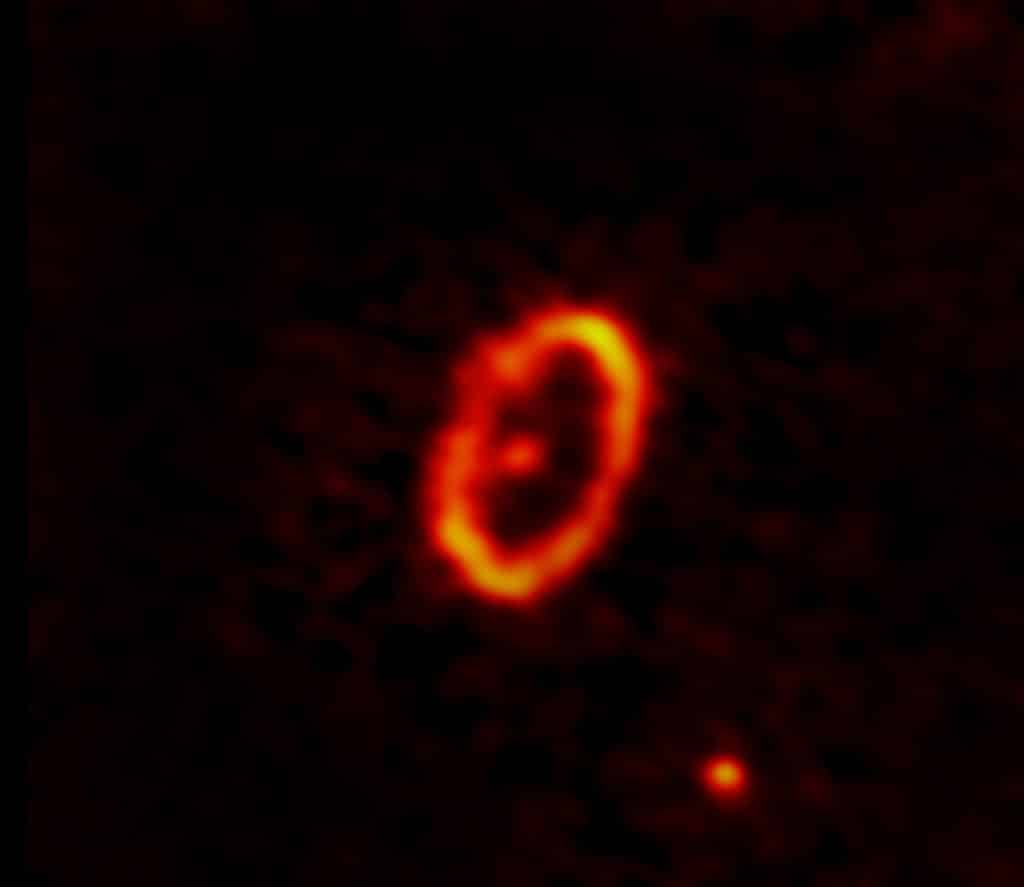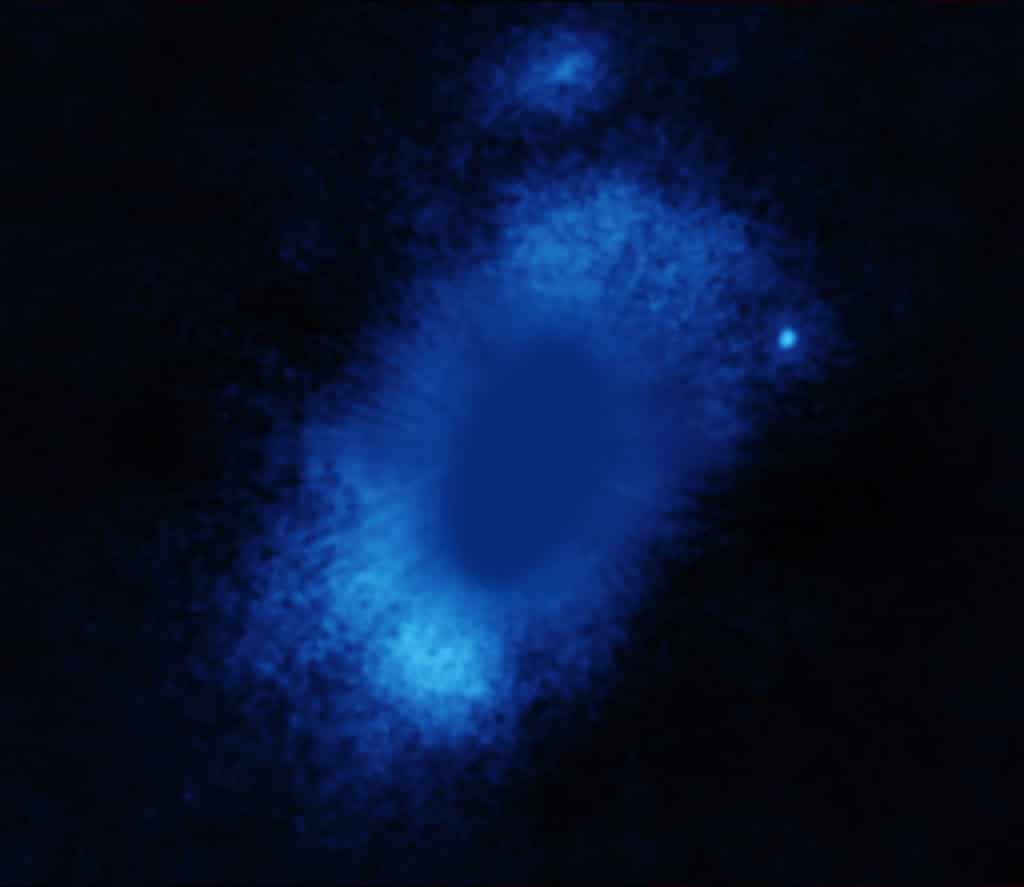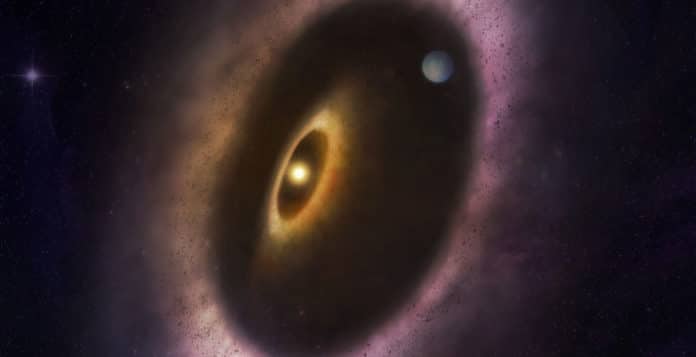Using the highly-sensitive Band 6 receivers on ALMA, astronomers discovered a really weird debris disk around a nearby star called HD 53143. The star HD 53143, which is almost billion-year-old, is a Sun-like star located 59.8 light-years from Earth in the Carina constellation.
The observations made at millimeter wavelengths show that the disk looks nothing like expected. The debris disk was expected as a face-on ring peppered with clumps of dust, similar to the debris disk called the Kuiper Belt. But, the observation revealed something different- It is the most complicated and eccentric debris disk observed to date.
The observations also revealed that the star system’s debris disk is highly eccentric. The star in ring-shaped debris discs is usually found at or near the disk’s center. In elliptically-shaped eccentric discs, however, the star is located at one focus of the ellipse, which is far from the disk’s center. This is the same case with HD 53143, which wasn’t seen in previous coronagraphic studies because coronagraphs purposely block the light of a star to see nearby objects.

The star system is expected to have a second disk and at least one planet.
Meredith MacGregor, an assistant professor at the Center for Astrophysics and Space Astronomy (CASA) at CU Boulder, said, “Until now, scientists had never seen a debris disk with such a complicated structure. In addition to being an ellipse with a star at one focus, it also likely has a second inner disk that is misaligned or tilted relative to the outer disk. To produce this structure, there must be a planet or planets in the system that are gravitationally perturbing the material in the disk.”
“This level of eccentricity makes HD 53143 the most eccentric debris disk observed to date, being twice as eccentric as the Fomalhaut debris disk, which MacGregor fully imaged at millimeter wavelengths using ALMA in 2017. So far, we have not found many disks with a significant eccentricity. In general, we don’t expect disks to be very eccentric unless something, like a planet, is sculpting them and forcing them to be eccentric. Without that force, orbits tend to circularize, like what we see in our Solar System.”
“Importantly, debris disks aren’t just collections of dust and rocks in space. They are a historical record of planetary formation and how planetary systems evolve. and provide a peek into their futures. We can’t study the formation of Earth and the Solar System directly, but we can study other systems that appear similar to but younger than our own. It’s a bit like looking back in time. Debris disks are the fossil record of planet formation, and this new result is confirmation that there is much more to be learned from these systems and that knowledge may provide a glimpse into the complicated dynamics of young star systems similar to our Solar System.”

Dr. Joe Pesce, NSF program officer for ALMA, added, “We are finding planets everywhere we look, and these fabulous results by ALMA are showing us how planets form – both those around other stars and in our own Solar System. This research demonstrates how astronomy works and how progress is made, informing not only what we know about the field but also about ourselves.”
Journal Reference:
- Meredith A. MacGregor et al. ALMA Images the Eccentric HD 53143 Debris Disk. DOI: 10.48550/arXiv.2206.05856
